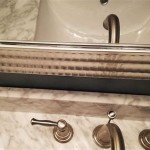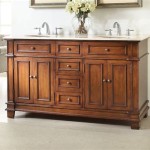Water Coming Out Of Bathroom Faucet Handles: Replacement Guide
A leaky bathroom faucet handle can be a frustrating and messy problem. Not only does it waste water, but it can also damage your bathroom vanity and create a hazardous slippery floor. The most likely cause of water leaking from the handle is a worn-out or damaged O-ring or washer within the faucet cartridge. Fortunately, replacing the cartridge is a relatively simple DIY project that can save you money and hassle.
This article will provide a step-by-step guide on how to replace a bathroom faucet handle when water is leaking from it. It will cover the tools and materials needed, the steps for removing the old cartridge, and the installation of the new one. It will also discuss some important safety precautions to take when working with plumbing.
Tools and Materials
Before you start, gather the following tools and materials:
- Adjustable wrench
- Channel-lock pliers
- Phillips screwdriver
- Flat-head screwdriver
- Rag or towel
- Bucket
- New faucet cartridge
It's essential to purchase a new faucet cartridge specifically designed for your brand and model of faucet. You can typically find this information on the underside of the faucet or on the manufacturer's website.
Steps for Replacing the Faucet Cartridge
Follow these steps to replace the faucet cartridge:
- Turn off the water supply. Locate the shut-off valve for your bathroom sink and turn it clockwise to completely stop the water flow.
- Drain the faucet. Open the faucet handles to release any remaining water in the pipes.
- Remove the handle. Use a screwdriver to remove the screw holding the handle in place. If the handle is held on by a decorative cap, use your fingers or pliers to remove it before accessing the screw.
- Remove the stem. Once the handle is removed, you'll see the stem, which is connected to the cartridge. Use channel-lock pliers or an adjustable wrench to unscrew the stem from the faucet body.
- Remove the old cartridge. The cartridge is usually held in place by a retaining clip or nut. Use your fingers or pliers to remove this. Once removed, take note of the old cartridge's shape, size, and any identifying markings for future reference.
- Install the new cartridge. Carefully insert the new cartridge into the faucet body, aligning it correctly. If the cartridge has a retaining nut, tighten it securely by hand first. It's helpful to thread it in a few turns before using a wrench or pliers.
- Reinstall the stem. Screw the stem back onto the faucet body by hand first, followed by tightening it securely with the channel-lock pliers or adjustable wrench.
- Reinstall the handle. Place the handle back in position and tighten the screw with a screwdriver.
- Turn on the water supply. Slowly turn the shut-off valve counterclockwise to restore the water flow.
- Test the faucet. Turn the faucet handles on and off, checking for any leaks. If there are leaks, re-tighten the cartridge or stem carefully.
Safety Precautions
When working with plumbing, it's crucial to take these safety precautions:
- Always turn off the water supply before working on a faucet.
- Use caution when working with tools and avoid applying excessive force.
- Wear protective gloves and eyewear while working.
- If you're unsure about any step, consult a licensed plumber.
By following these steps and taking proper precautions, you can successfully replace a leaking bathroom faucet handle and enjoy a leak-free bathroom sink.

How To Fix A Leaking Bathtub Faucet Diy Family Handyman

5 Reasons Your Faucet Is Dripping Water How To Fix It

5 Reasons Your Faucet Is Dripping Water How To Fix It

How Do I Replace Bathroom Sink Faucet Handles Cleaning More

How To Fix A Leaky Faucet True Value

How To Fix A Leaky Faucet Forbes Home

Bathroom Faucet Is Leaking Or Dripping

Old House Handyman Fixing Leaky Faucet Turns Into Family Affair

How To Fix A Stripped Faucet Handle In 10 Minutes Or Less

How To Repair A Single Handle Kitchen Faucet Diy Family Handyman
Related Posts







